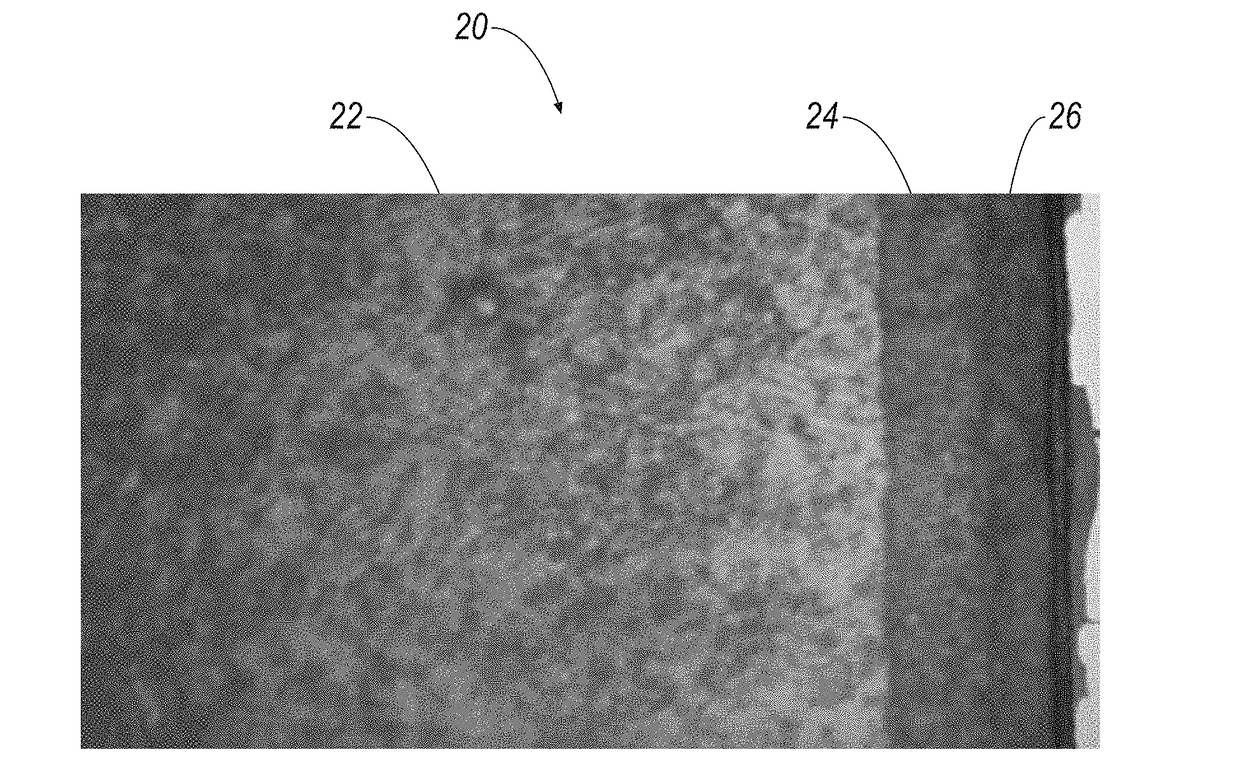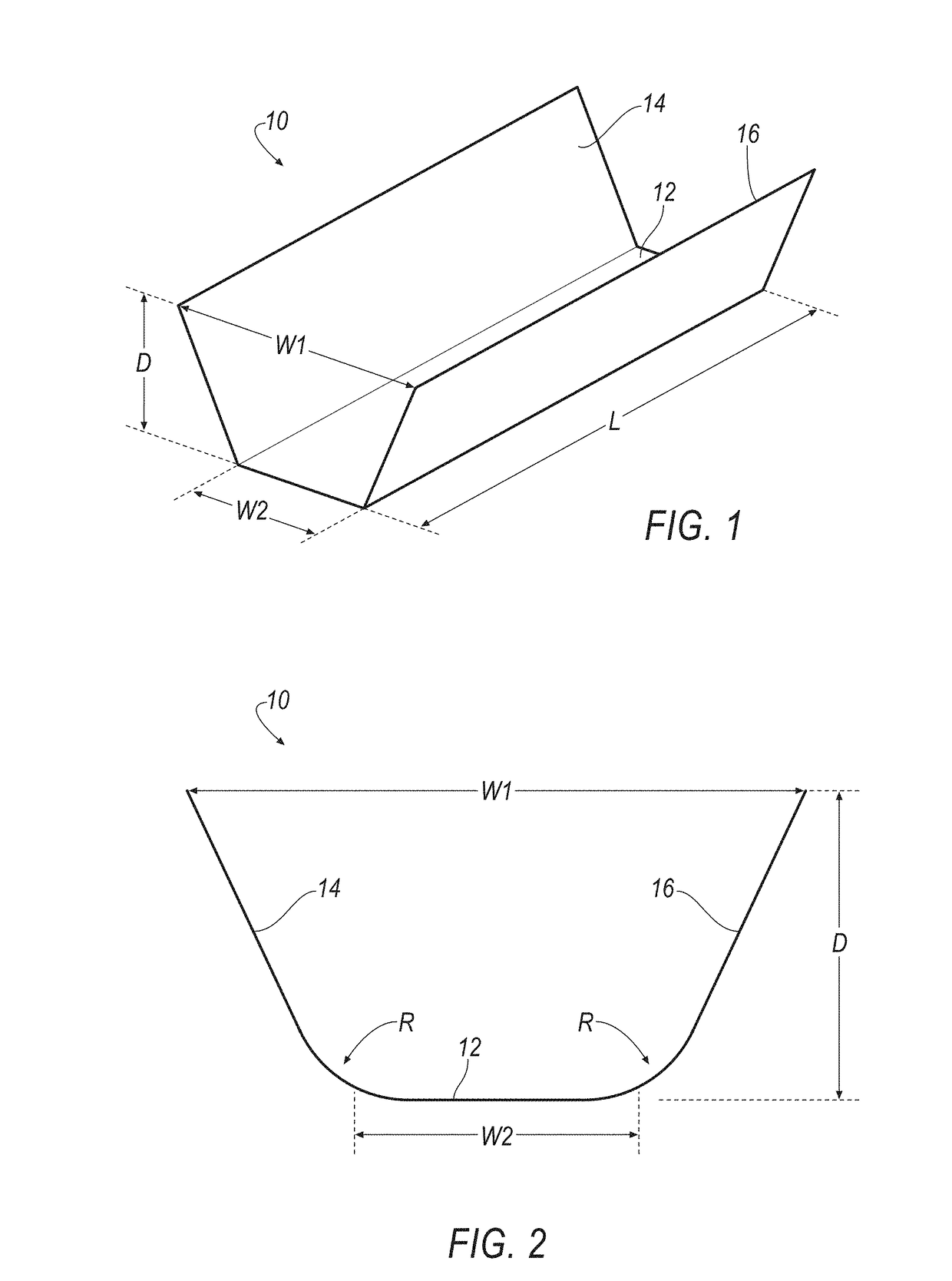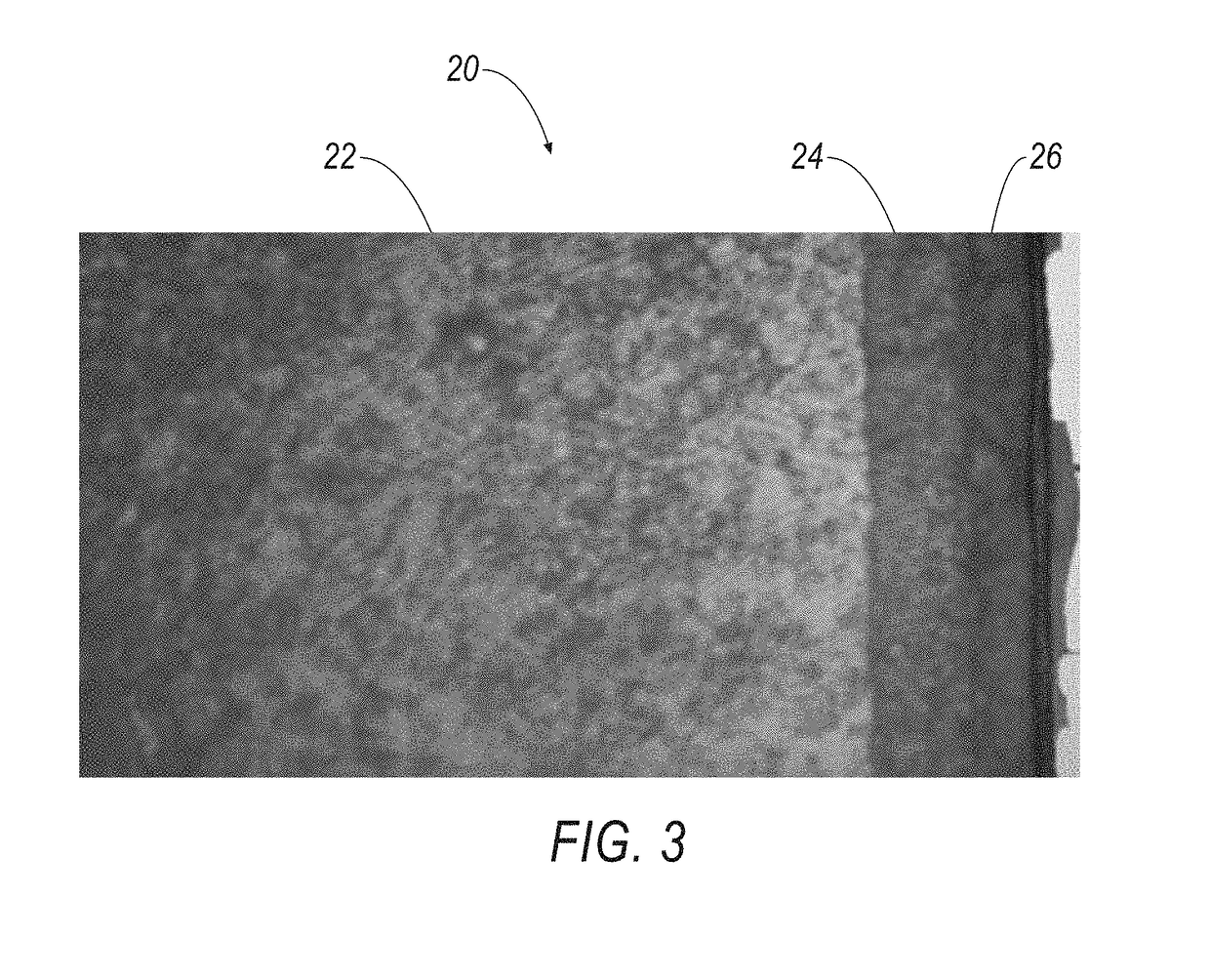Method of non-destructive testing a cutting insert to determine coating thickness
a cutting insert and coating technology, applied in the field of cutting inserts, can solve the problems of providing results at various levels of cost, accuracy and time, high equipment and testing costs, and time-consuming sample preparation, and achieve the effect of time and cost-effectiveness
- Summary
- Abstract
- Description
- Claims
- Application Information
AI Technical Summary
Benefits of technology
Problems solved by technology
Method used
Image
Examples
Embodiment Construction
[0024]In general, the non-destructive method of the invention comprises the steps of: 1) using a source of electromagnetic energy, such as a femtosecond laser, and the like, to ablate the surface of the cutting insert to form a geometric feature and expose a cross section of the one or more layers of a coating; and 2) measuring the thickness of the one or more layers by examination of the cross section using conventional microscopy techniques.
[0025]One technique of forming the groove through the one or more coating layers is by using electromagnetic energy, such as a short pulse picosecond laser, short pulse femtosecond laser, and the like. Short pulse lasers have undergone a rapid growth both in capability and application since the advent of chirped pulse amplification. Initially driven by cutting-edge fundamental research, the development of femtosecond lasers has now interlinked with many industrial metrology, research, and clinical applications. Further, by enabling action on ma...
PUM
| Property | Measurement | Unit |
|---|---|---|
| Time | aaaaa | aaaaa |
| Time | aaaaa | aaaaa |
| Power | aaaaa | aaaaa |
Abstract
Description
Claims
Application Information
 Login to View More
Login to View More - R&D
- Intellectual Property
- Life Sciences
- Materials
- Tech Scout
- Unparalleled Data Quality
- Higher Quality Content
- 60% Fewer Hallucinations
Browse by: Latest US Patents, China's latest patents, Technical Efficacy Thesaurus, Application Domain, Technology Topic, Popular Technical Reports.
© 2025 PatSnap. All rights reserved.Legal|Privacy policy|Modern Slavery Act Transparency Statement|Sitemap|About US| Contact US: help@patsnap.com



